Introduction to Yuanyang Rice Terraces
Nestled in the southern reaches of Yunnan Province, China, the Yuanyang Rice Terraces stand as a testament to human ingenuity and harmony with nature. These cascading fields, carved into the contours of the Ailao Mountains, represent over 1,300 years of agricultural tradition and cultural heritage.
Recognized as a UNESCO World Heritage Site in 2013, the Yuanyang Rice Terraces are not merely an agricultural wonder but a living landscape that embodies the profound relationship between the Hani people and their environment. The terraces span an impressive 16,603 hectares, with the core area covering 3,000 hectares.
This magnificent spectacle draws visitors from around the world, offering a glimpse into a way of life that has remained largely unchanged for centuries.
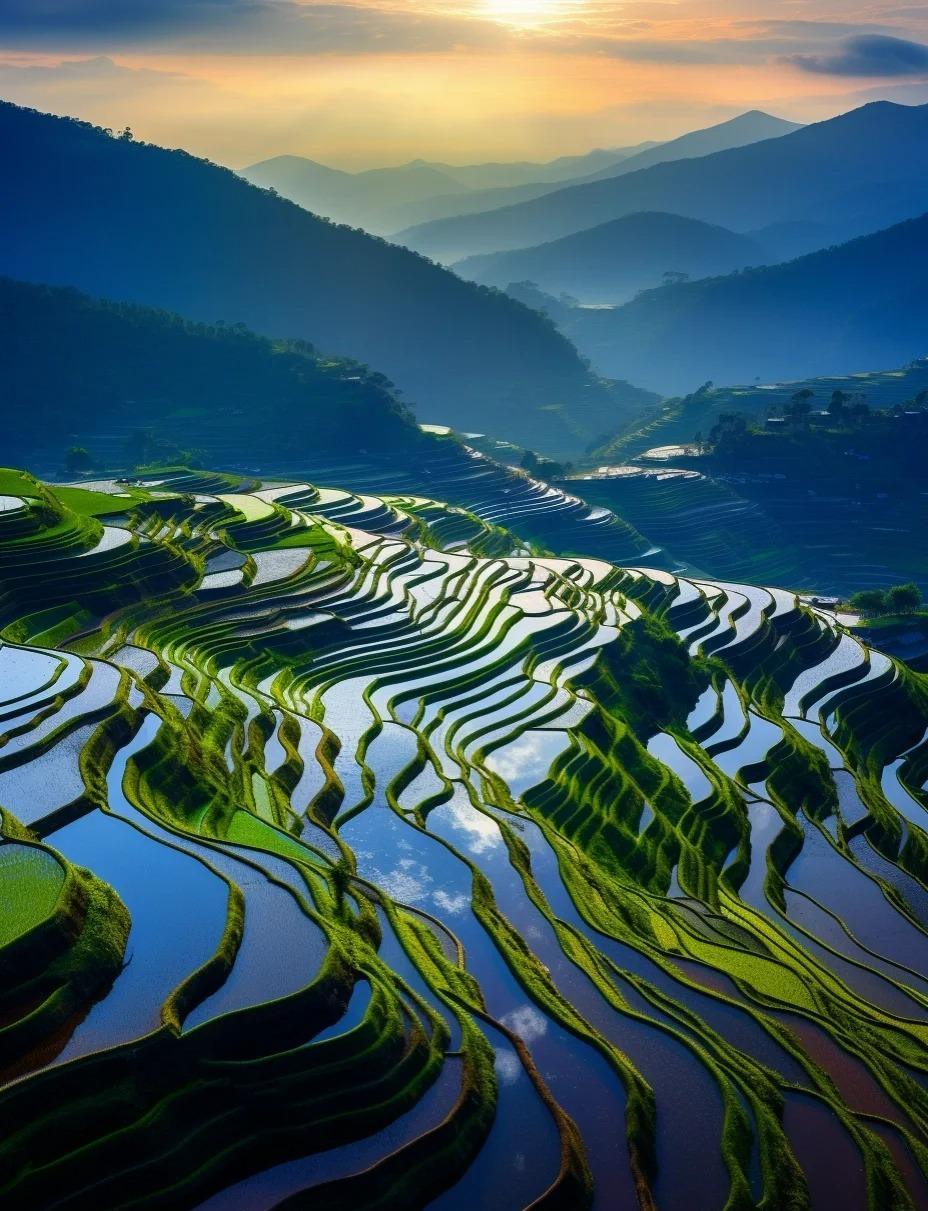
History and Cultural Significance
The Yuanyang Rice Terraces have been cultivated by the Hani people since the Tang Dynasty (618-907 AD). Over generations, they have perfected a complex system of channels to manage water from the mountain tops to the terraces below.
The Hani’s traditional knowledge and practices have been crucial in maintaining this delicate ecosystem:
- Terracing techniques that prevent soil erosion
- Water management systems that maximize the use of rainfall and springs
- Crop rotation methods that maintain soil fertility
These ancient practices not only sustain the terraces but also preserve the Hani’s unique cultural identity, which is intrinsically linked to the land they cultivate.
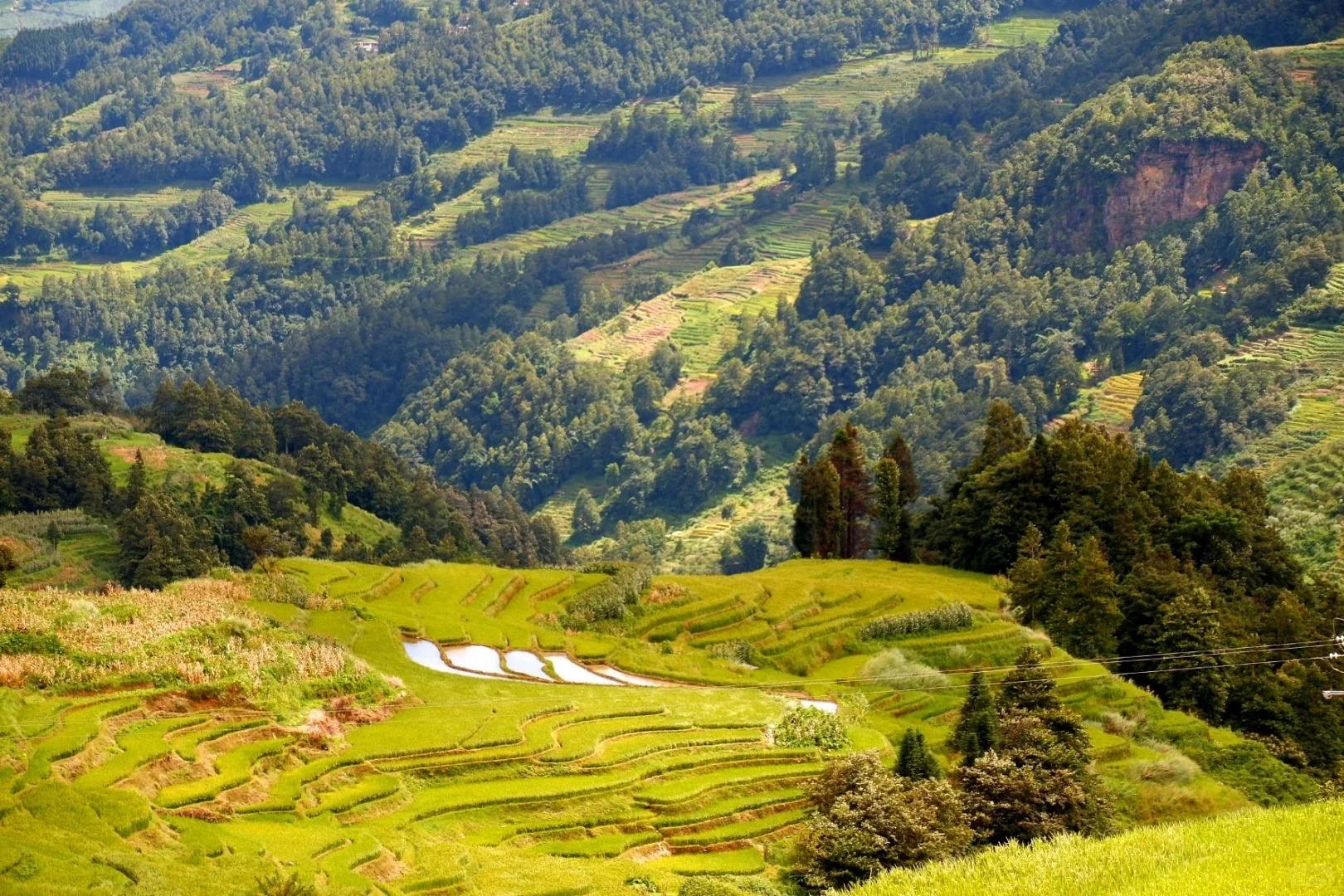
Landscape and Natural Beauty
The Yuanyang Rice Terraces present a landscape of breathtaking beauty that changes with the seasons:
| Season | Landscape Appearance |
|---|---|
| Winter | Mirror-like reflections in water-filled terraces |
| Spring | Tender green rice shoots emerging |
| Summer | Lush, verdant terraces full of growing rice |
| Autumn | Golden terraces ready for harvest |
Famous viewpoints such as Duoyishu, Bada, and Laohuzui offer panoramic vistas that showcase the terraces’ grandeur. The interplay of light, water, and land creates a dynamic canvas that never fails to captivate visitors.
Beyond their visual appeal, the terraces support a unique ecosystem. The symbiosis between forest, village, and terrace fields has fostered rich biodiversity, including numerous plant and animal species endemic to the region.
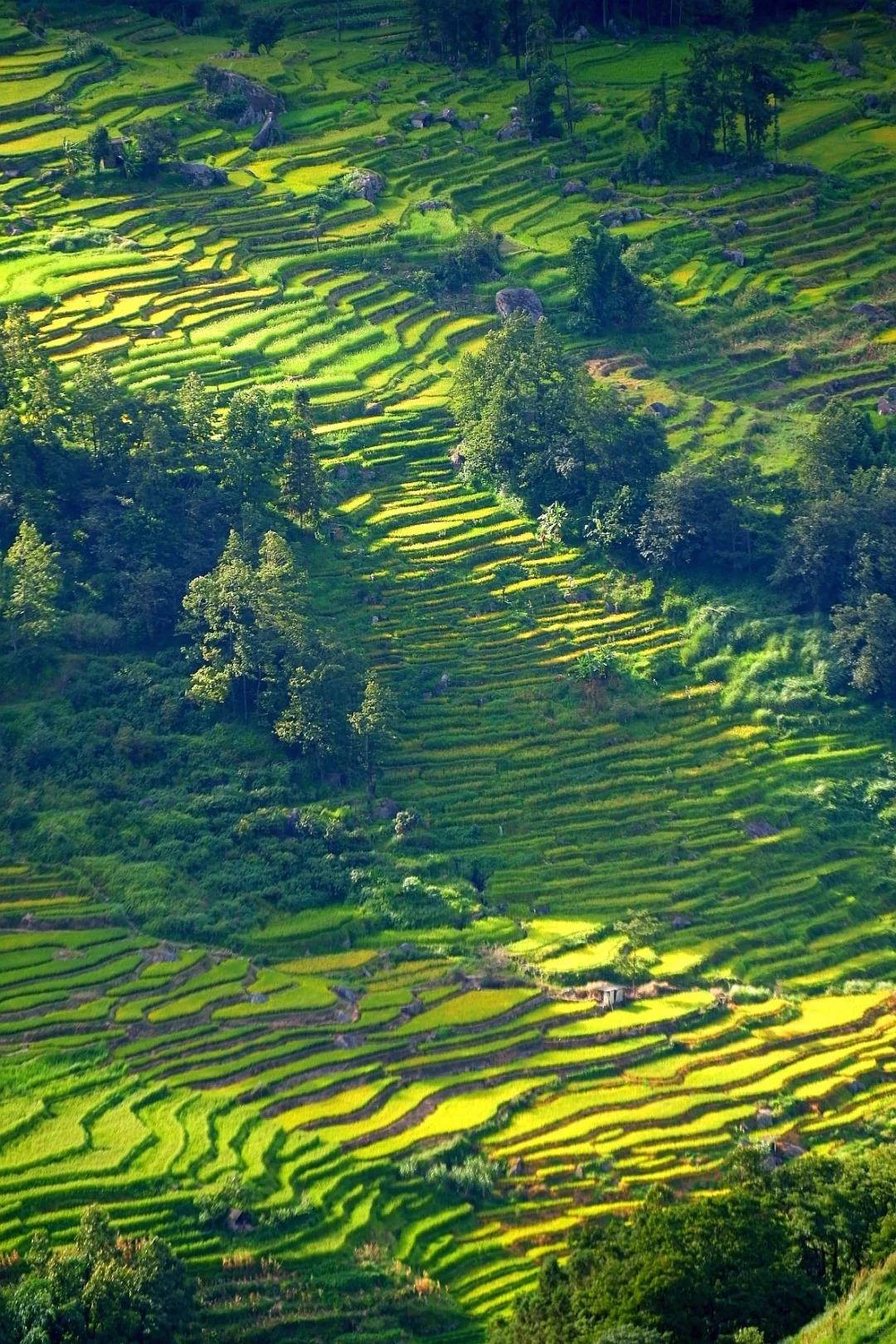
Photography Opportunities
For photographers, the Yuanyang Rice Terraces are a dream destination. The changing light and seasons offer endless possibilities for capturing stunning images:
- Sunrise at Duoyishu: Witness the terraces gradually illuminated by the rising sun.
- Sunset at Laohuzui: Capture the golden hour as it bathes the terraces in warm light.
- Reflections at Bada: During winter, photograph perfect mirror images in the water-filled terraces.
Best seasons for photography:
- Winter (December to March) for reflections and mist
- Spring (April to May) for vivid green hues
- Autumn (September to November) for golden harvest scenes
Tip: Bring a wide-angle lens to capture the expansive landscape and a telephoto lens for detailed shots of village life and terrace patterns.
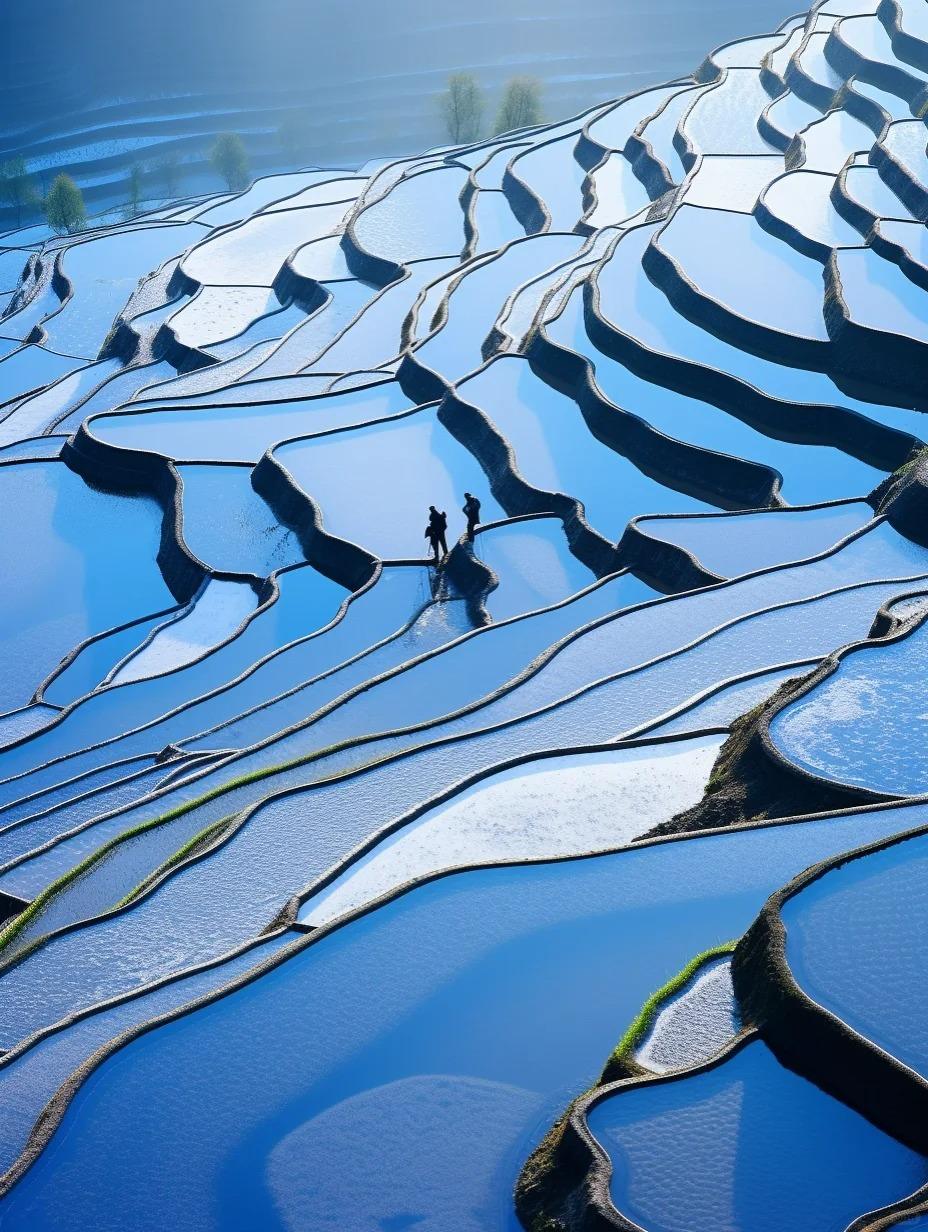
Visiting Yuanyang Rice Terraces
The best time to visit is from November to April when the terraces are filled with water, creating stunning reflections. However, each season offers its own unique beauty.
Getting there:
- Fly to Kunming, the capital of Yunnan Province
- Take a bus or hire a car for the 7-hour journey to Yuanyang County
- Local transport to specific viewpoints
Recommended stay: 2-3 days to fully experience the terraces and local culture.
Accommodations range from basic guesthouses in Hani villages to more comfortable hotels in the town of Xinjie.

Local Culture and Experiences
Immersing in Hani culture enhances the Yuanyang experience:
- Visit local markets selling traditional crafts and produce
- Try authentic Hani cuisine, known for its use of local ingredients and unique flavors
- Participate in festivals like the Long Street Banquet, where entire villages gather for communal feasts
For a deeper cultural experience, consider a homestay with a Hani family. This offers insight into daily life and traditional practices that have sustained the terraces for centuries.
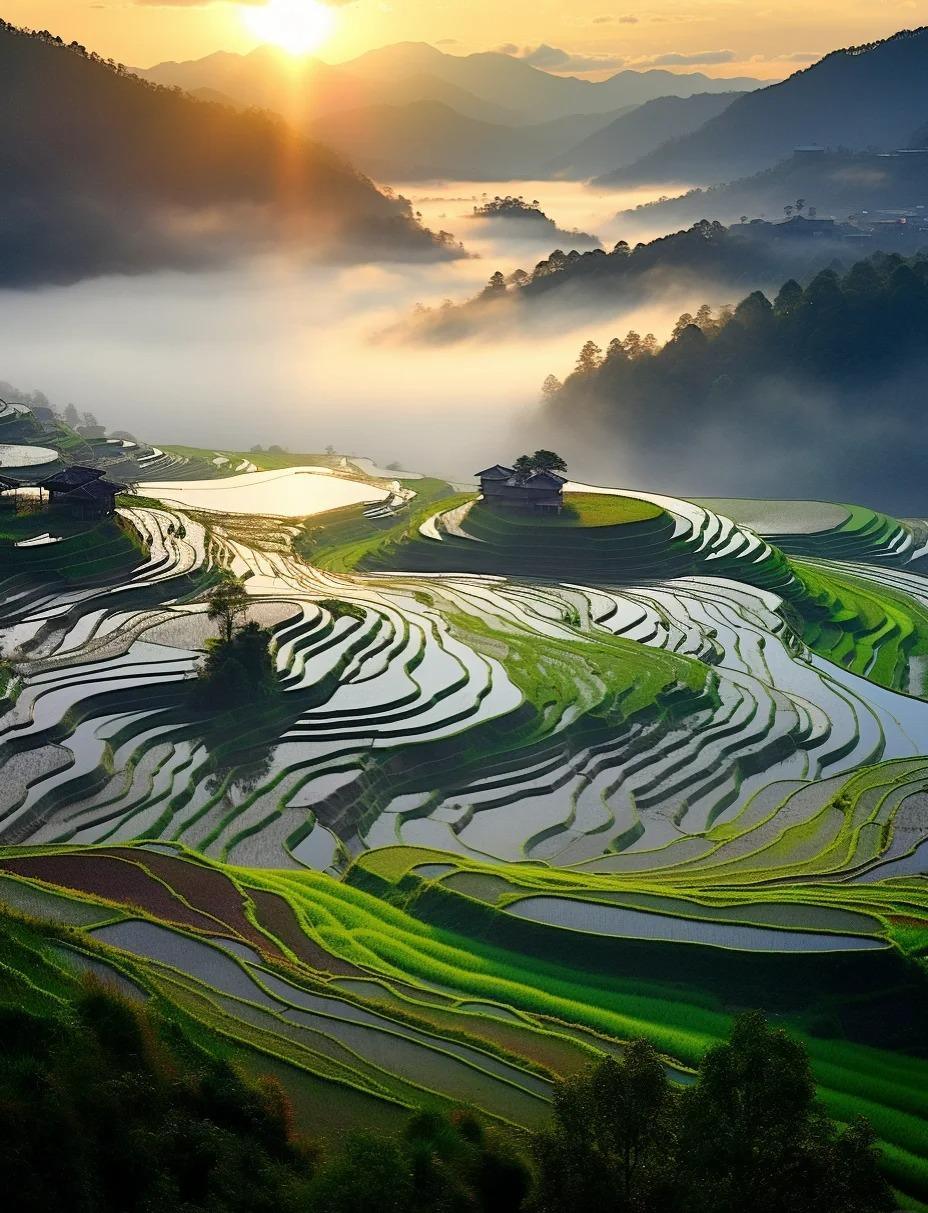
Sustainable Tourism and Conservation
Preserving the Yuanyang Rice Terraces is crucial for both environmental and cultural reasons. Efforts are underway to balance tourism development with conservation:
- Promoting traditional farming methods to maintain the landscape
- Implementing visitor management strategies to prevent overcrowding
- Encouraging eco-friendly practices among tourists and locals
Visitors can contribute by:
- Respecting local customs and environments
- Supporting local businesses and homestays
- Participating in guided tours that emphasize cultural and environmental education
The future of Yuanyang faces challenges such as rural-urban migration and climate change. Ongoing efforts focus on empowering the Hani community to continue their traditional practices while adapting to modern realities.
As you stand before the vast expanse of the Yuanyang Rice Terraces, you’re not just witnessing a remarkable landscape – you’re experiencing a living heritage that tells the story of human perseverance and harmony with nature. This masterpiece, sculpted by generations of Hani people, serves as a powerful reminder of our capacity to work in concert with the environment rather than against it.
The terraces of Yuanyang are more than a tourist destination; they’re a profound lesson in sustainable living and cultural preservation. As we face global challenges of food security and environmental conservation, places like Yuanyang offer invaluable insights into how traditional knowledge can guide us towards a more sustainable future.
Whether you’re a photographer chasing the perfect light, a culture enthusiast seeking authentic experiences, or simply a traveler in awe of natural wonders, Yuanyang promises an unforgettable journey. It invites us to slow down, reflect, and appreciate the intricate balance between human ingenuity and natural beauty – a balance that has been maintained here for over a millennium.






